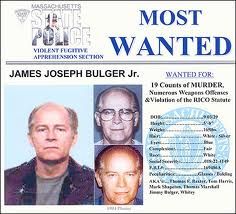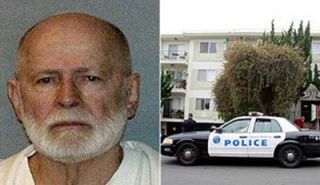Bias
Why Whitey Bulger Went Unnoticed in Older Age
A face recognition bias hides a Top 10 criminal on the run?
Posted July 23, 2013
Usually a most wanted criminal will make themselves scarce, by fleeing the country or using disguises and plastic surgery to become lost in the crowd. James “Whitey” Bulger, alleged murderer and Boston mobster currently on trial, did quite the opposite, and simply let old age help him hide from authorities. Bulger was second behind Osama Bin Laden on the FBI's Most Wanted List. for 19 gang-related murders, mostly in his hometown of Boston.

After Bin Laden was killed, Bulger moved to first on the Most Wanted List. For the last 10 years, Bulger resided in a tourist and retirement friendly beach city in Southern California, until he was recently captured at the age of 81. In Santa Monica, he lived in an unassuming 2-bedroom, rent-controlled apartment. It remains somewhat of a mystery as to how someone listed as the most wanted criminal, hid, by not really hiding much at all.

One critical reason is that Bulger was an older adult. Presumably most of the people hunting him were in their younger years or middle aged. Younger people are good at identifying and recognizing younger faces, but poorer at recognizing older faces (i.e., younger people will say that older faces all start to look the same). In contrast, older adults pay more attention to older faces, and have better face recognition for older, relative to younger, faces. This “own-age” advantage or bias in face recognition may have helped Whitey Bulger elude authorities for years, especially if those who were looking for him were younger than 80 years of age, which was likely.
The own-age bias is well established in psychological research, and can often play a major role in the success or failure of eye-witness identification, along with the own-race bias (people are better at identifying faces of their own race, relative to other races). People may also have biases regarding age in that people may not suspect an older adult of being a ruthless mobster of yesteryears. This may be especially the case in the tourist and beach-town community of Santa Monica, which historically has been considered a retirement haven, but now is a more tourist-friendly and affluent city with many senior citizens. Bulger, under an assumed name, was even a registered and subscribing member of AARP.
It is likely that people habituate or become less aware of anything unusual or uncommon after they have seen someone around for a while. For example, we stop noticing the humming of the refrigerator in the background, or even the fire extinguisher that is across the hall, as we have repeatedly encountered it (for a striking demonstration, see this blog). After meeting someone, and seeing them regularly around town and at local businesses, one would likely not notice much about a senior citizen who moved to Santa Monica a few years ago. Bulger and his girlfriend were often described by neighbors as that nice older couple, who always wore white.
Whitey Bulger regularly did things you would expect people to do in Santa Monica, as he strolled along the beach-front at Pacific Palisades Park, frequented local popular and expensive restaurants, and would regularly get his beard trimmed at the local barbershop (reportedly at least once while a police officer also happened to be there). He would also regularly wear his Boston Red Sox hat, unconcerned about drawing attention to his out-of-town roots.

It is both surprising and concerning that an 80 year old criminal can easily blend into a smaller community, and go unnoticed for more than a decade. The person who was credited with finally recognizing and turning him in was a 57 year old former neighbor. Perhaps given the own-age advantage and biases that exist regarding face recognition, there may be benefits to employing older adults as “senior detectives”, capable of recognizing faces of criminals who have aged.


